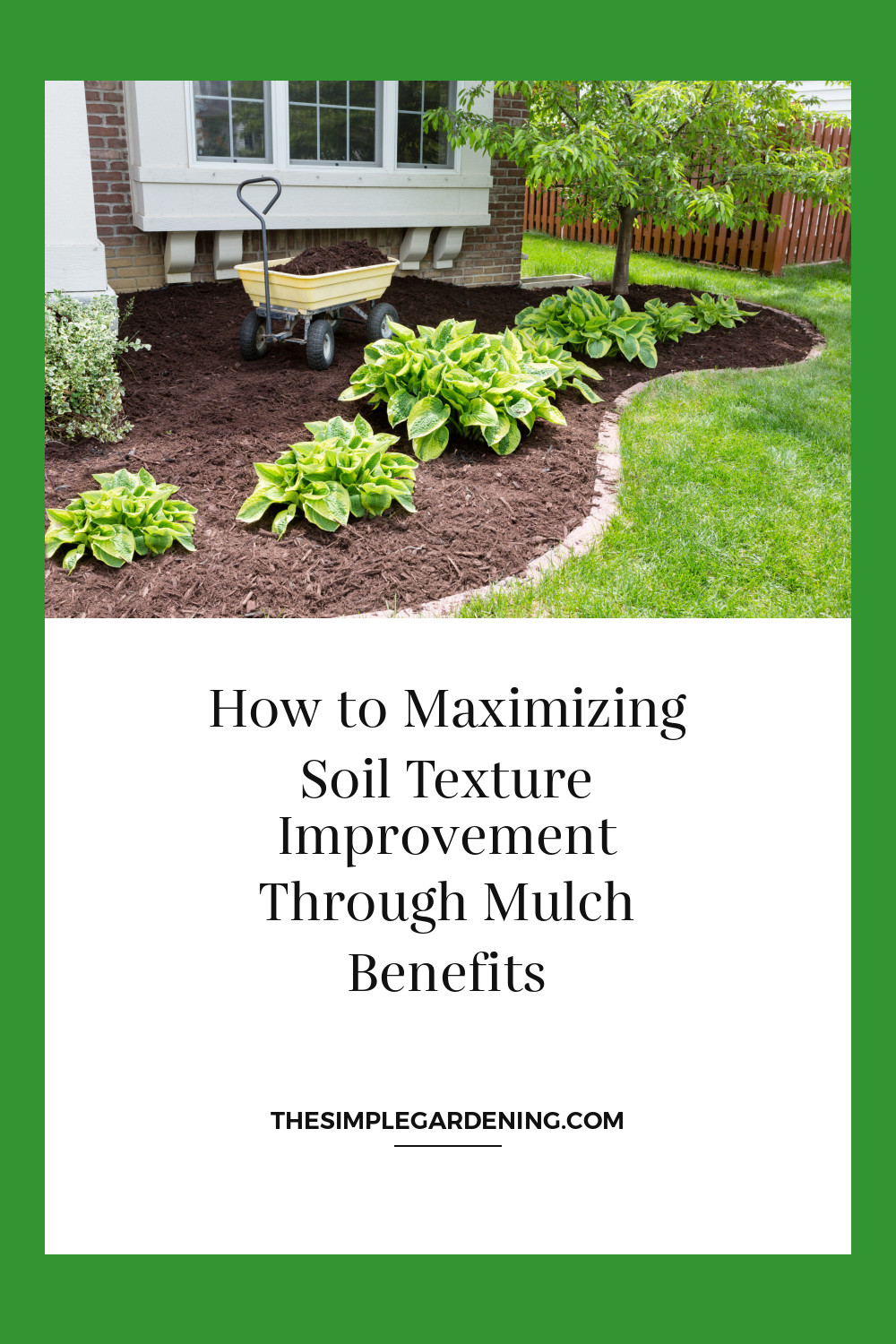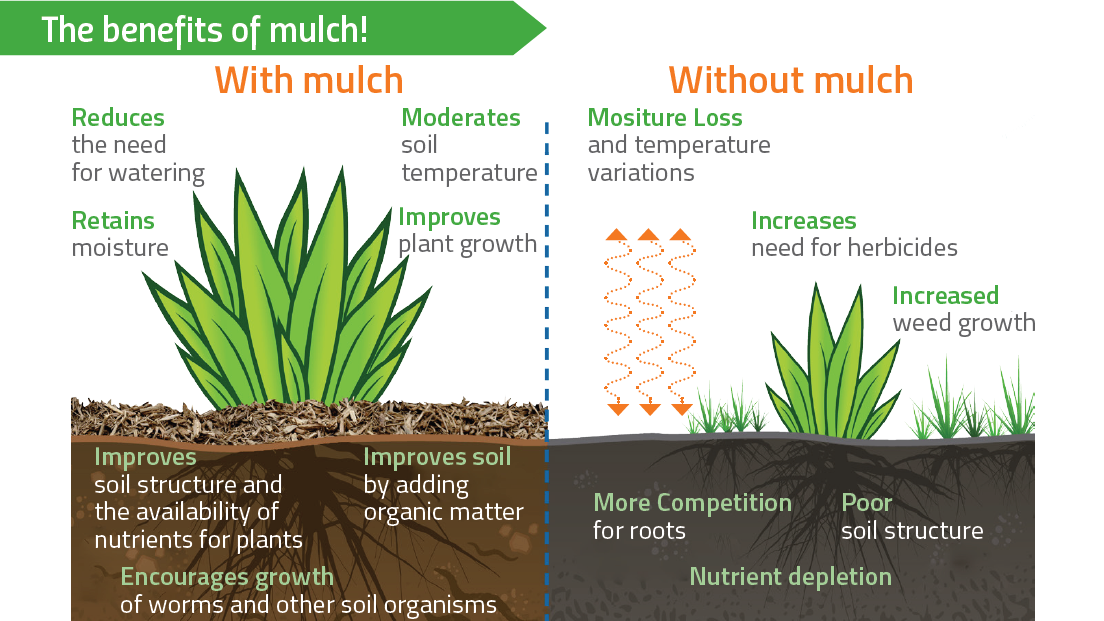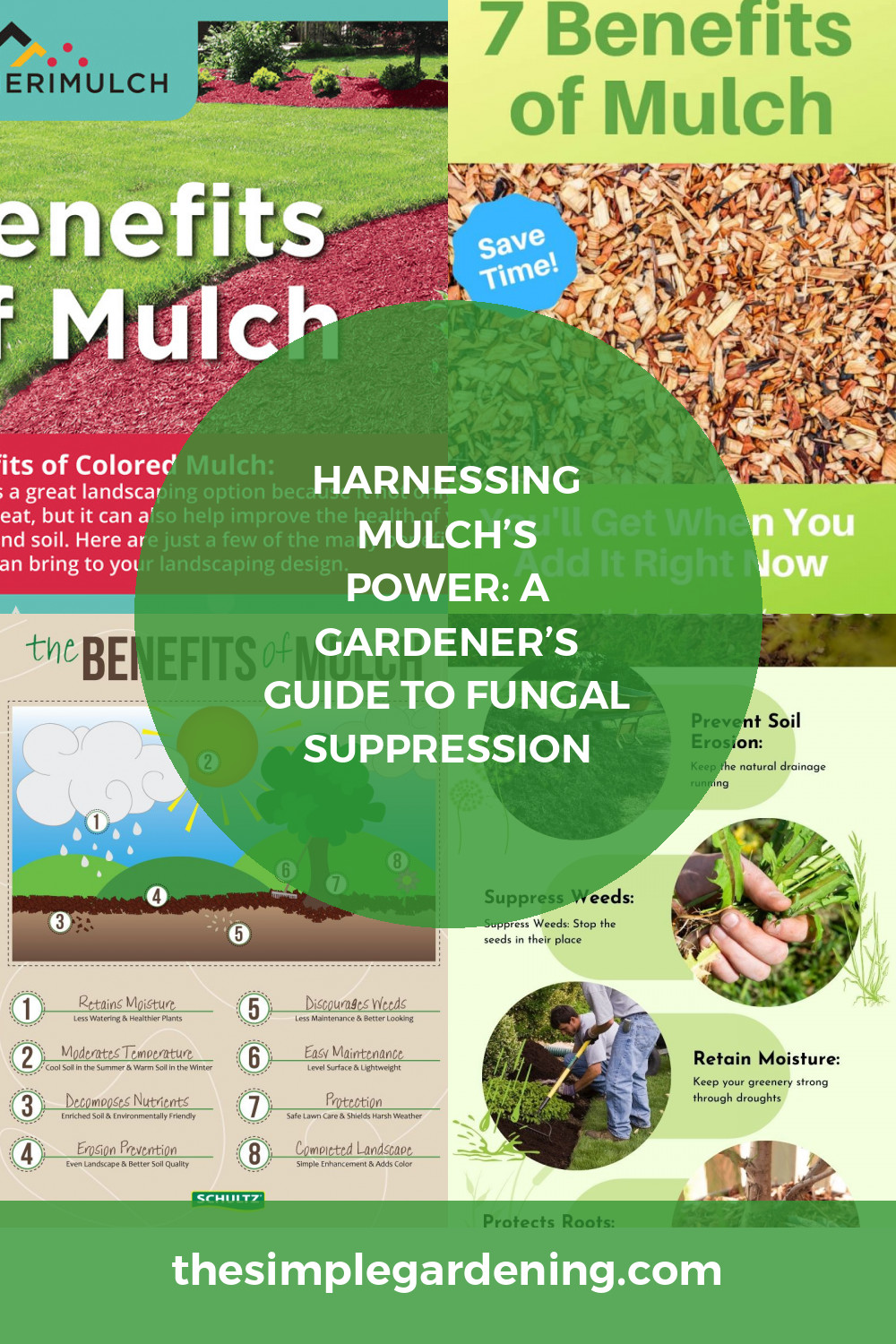Mulch plays a pivotal role in nurturing healthy soil, fostering plant growth, and fortifying ecosystems. Understanding its significance in soil texture improvement is essential for any gardener or landscaper. In this article, we delve into the diverse aspects of mulch, exploring its types, mechanisms, application techniques, and long-term benefits.
Types of Mulch
Mulch comes in various forms, each with its unique properties and advantages.
| Mulch Type | Examples | Benefits for Soil Texture Improvement |
|---|---|---|
| Organic Mulch | Straw, Wood Chips, Leaves | Enhances soil structure by promoting microbial activity and decomposition, improving aeration and moisture retention. |
| Inorganic Mulch | Plastic, Rubber, Rocks | Provides long-lasting weed suppression and moisture retention, though may not contribute organic matter to soil texture. |
Mechanisms of Soil Texture Improvement
Understanding how mulch affects soil texture is crucial for maximizing its benefits.
| Mechanism | Description |
|---|---|
| Moisture Retention | Mulch acts as a protective layer, reducing evaporation and maintaining soil moisture levels, vital for optimal plant growth. |
| Temperature Regulation | By insulating the soil, mulch moderates temperature extremes, ensuring a stable environment for microbial activity and root development. |
| Weed Suppression | Smothering weeds and inhibiting their growth, mulch helps maintain a clean and healthy growing environment, reducing competition for nutrients and moisture. |
| Nutrient Recycling | Organic mulches gradually decompose, releasing essential nutrients into the soil, enriching it over time and supporting vigorous plant growth. |
Mulch Application Techniques
Proper application of mulch is essential for maximizing its effectiveness.
| Technique | Description |
|---|---|
| Thickness Considerations | A layer of mulch 2-4 inches thick provides adequate coverage, balancing moisture retention and airflow. Avoid piling mulch against plant stems to prevent rot and pest infestation. |
| Application Frequency | Replenish mulch annually to maintain its effectiveness, as organic mulches decompose over time. Monitor mulch thickness regularly and top up as needed to ensure consistent coverage. |
| Mulch Placement Methods | Spread mulch evenly around plants, extending to the drip line to maximize moisture retention and weed suppression. Mulch should not touch plant stems directly to prevent moisture-related issues. |

Source Image: blog.chromascape.com
Soil Texture Assessment
Before applying mulch, understanding soil texture is crucial for optimal results.
| Assessment Method | Description |
|---|---|
| Understanding Soil Texture | Soil texture refers to the relative proportions of sand, silt, and clay particles in the soil, influencing its water retention, drainage, and nutrient-holding capacity. |
| Testing Soil Texture | Various methods, such as the ribbon test or jar test, can help determine soil texture by analyzing its physical properties and particle distribution. |
| Interpreting Results | Based on test results, adjust mulch selection and application techniques accordingly to address any deficiencies or challenges in soil texture. |
Mulch Selection Criteria
Choosing the right mulch depends on various factors, including soil type and environmental considerations.
| Selection Criteria | Description |
|---|---|
| Matching Mulch Type to Soil Type | Consider soil texture, pH levels, and nutrient requirements when selecting mulch to ensure compatibility and maximize benefits. |
| Environmental Considerations | Choose sustainable mulch options that minimize environmental impact and promote biodiversity, such as locally sourced organic materials or recycled inorganic mulches. |
| Cost and Availability | Balance the cost-effectiveness and availability of mulch options with their performance and long-term benefits to optimize overall value for your gardening or landscaping projects. |

Source Image: www.pinterest.com
Impact of Mulch on Soil Microorganisms
The intricate relationship between mulch and soil microbes plays a crucial role in soil texture improvement.
| Microorganism Impact | Description |
|---|---|
| Role of Microbes | Soil microbes, including bacteria, fungi, and protozoa, contribute to nutrient cycling, organic matter decomposition, and soil structure enhancement, facilitated by mulch inputs. |
| Effects of Mulch on Microbes | Mulch provides an ideal habitat and food source for beneficial microbes, fostering their proliferation and activity, which in turn enhances soil texture and nutrient availability. |
| Balancing Microbial Populations | Maintaining a diverse microbial community through proper mulch management ensures ecosystem resilience and functional stability, promoting soil health and texture improvement. |
Case Studies in Soil Texture Improvement
Real-world examples demonstrate the transformative impact of mulch on soil texture and plant health.
| Case Study | Description |
|---|---|
| Agricultural Applications | Farms and agricultural operations utilize mulch to conserve soil moisture, suppress weeds, and enhance soil fertility, resulting in improved crop yields and sustainable land management. |
| Landscaping Projects | Professional landscapers incorporate mulch into design and maintenance plans to improve soil texture, reduce erosion, and create visually appealing and environmentally friendly landscapes. |
| Urban Gardening Initiatives | Community gardens and urban green spaces employ mulch to revitalize degraded soils, mitigate urban heat island effects, and promote local food production and environmental stewardship. |
Mulch and Soil Erosion Control
Mulch serves as a natural barrier against soil erosion, safeguarding soil structure and fertility.
| Erosion Control Strategies | Description |
|---|---|
| Preventing Erosion with Mulch | Mulch effectively shields soil from erosive forces of wind and water, reducing surface runoff and soil displacement, particularly on slopes and in areas prone to erosion. |
| Mulch as a Barrier to Erosion | The physical presence of mulch impedes the impact of raindrops, minimizes soil compaction, and promotes infiltration, preventing soil loss and preserving landscape integrity. |
| Long-Term Effects on Soil Structure | Over time, mulch fosters soil aggregation, root penetration, and microbial activity, fortifying soil structure and resilience against erosion, supporting sustainable land management. |
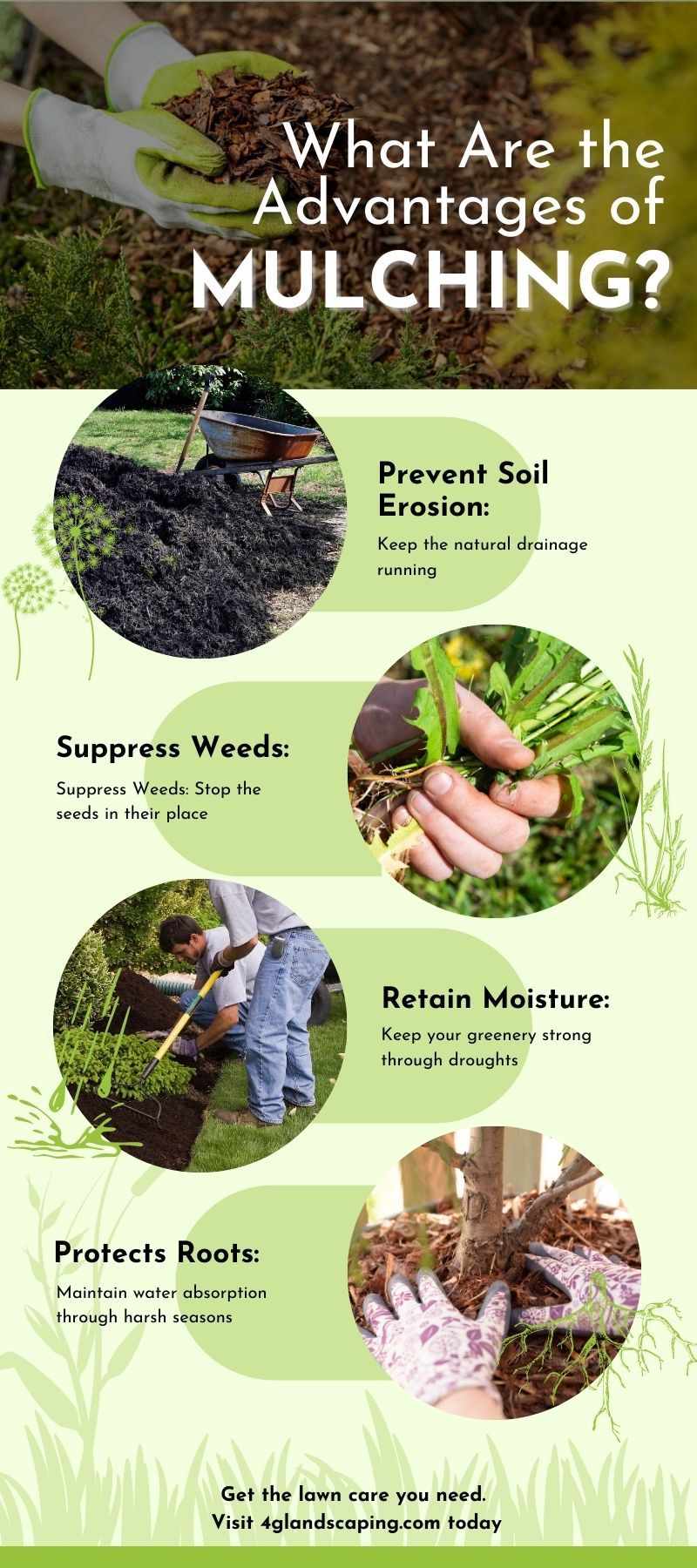
Source Image: www.4glandscaping.com
Mulch and Soil Compaction Reduction
Combatting soil compaction is essential for maintaining soil texture and promoting root growth.
| Compaction Reduction Strategies | Description |
|---|---|
| Mulch’s Role in Alleviating Compaction | By distributing weight and promoting aeration, mulch alleviates soil compaction, enhancing root development and water infiltration, particularly in high-traffic or compacted areas. |
| Techniques for Using Mulch | Incorporating mulch into soil amendments or using it as a surface layer in high-traffic areas effectively reduces compaction, improving soil structure and promoting healthy plant growth. |
| Monitoring Compaction Levels | Regular monitoring of soil compaction using penetrometers or visual assessments allows for timely intervention and adjustment of mulch practices to maintain optimal soil texture and health. |
Mulch and Plant Health
The symbiotic relationship between mulch and plant health is fundamental for thriving gardens and landscapes.
| Plant Health Benefits | Description |
|---|---|
| Connection Between Soil Texture | Proper soil texture, facilitated by mulch, ensures optimal root development, nutrient uptake, and water retention, contributing to robust plant growth and resilience against environmental stressors. |
| Impact of Mulch on Root Development | Mulch insulates and protects roots from temperature extremes, reduces soil compaction, and enhances soil moisture levels, fostering healthy root growth and proliferation throughout the root zone. |
| Mulch’s Role in Disease Prevention | By minimizing soil splash and reducing surface moisture, mulch helps prevent soil-borne diseases, such as fungal infections, root rot, and damping-off, promoting plant vigor and longevity. |
Source Image: www.bundaberg.qld.gov.au
Mulch Benefits for Soil Texture Improvement
Environmental Benefits of Mulch
Beyond soil texture improvement, mulch offers a myriad of environmental advantages, promoting sustainability and ecosystem health.
| Environmental Benefits | Description |
|---|---|
| Reduction of Water Usage | Mulch conserves soil moisture by minimizing evaporation and runoff, reducing the need for supplemental irrigation and promoting water efficiency in gardening and landscaping practices. |
| Minimization of Fertilizer Runoff | By enhancing soil structure and nutrient retention, mulch reduces fertilizer leaching and runoff, mitigating water pollution and promoting environmentally responsible gardening practices. |
| Contribution to Carbon Sequestration | Organic mulches contribute to carbon sequestration by storing carbon in the soil, mitigating greenhouse gas emissions, and combating climate change, supporting global efforts for environmental sustainability. |
Economic Considerations
Assessing the economic viability of mulch usage involves analyzing costs, benefits, and long-term savings.
| Economic Considerations | Description |
|---|---|
| Cost-Benefit Analysis of Mulch Usage | Evaluating the upfront costs of mulch materials and application against long-term benefits, such as reduced water usage, fertilizer expenses, and labor, to determine overall cost-effectiveness. |
| Long-Term Savings in Soil Management | Investing in mulch for soil texture improvement yields substantial long-term savings by reducing irrigation needs, minimizing soil erosion, and enhancing soil fertility, supporting sustainable soil management practices. |
| Economic Viability in Various Sectors | Mulch usage offers economic benefits across diverse sectors, including agriculture, landscaping, and urban development, by improving crop yields, enhancing property values, and reducing maintenance costs. |

Source Image: treeandgarden.com.au
Mulch as a Sustainable Practice
Embracing mulch as a sustainable gardening practice fosters environmental stewardship and resource conservation.
| Sustainable Practices | Description |
|---|---|
| Mulch Production from Renewable Resources | Utilizing renewable materials, such as wood chips from sustainably managed forests or composted organic matter, minimizes environmental impact and supports responsible resource management. |
| Recycling and Reusing Mulch Materials | Recycling yard waste and organic matter into mulch reduces landfill waste, conserves resources, and closes the nutrient cycle, promoting circular economy principles and ecological resilience. |
| Promoting Sustainable Mulch Practices | Educating gardeners and landscapers on best practices, such as mulch application techniques, material selection, and environmental stewardship, fosters a culture of sustainability and conservation. |
Future Directions in Mulch Research and Development
Continuous innovation and collaboration drive advancements in mulch science, paving the way for sustainable soil management practices.
| Research and Development Areas | Description |
|---|---|
| Innovations in Mulch Materials | Research focuses on developing novel mulch materials with enhanced properties, such as improved moisture retention, biodegradability, and weed suppression, to address evolving environmental and agronomic challenges. |
| Emerging Technologies | Integration of technology, such as remote sensing, precision agriculture, and bioengineering, offers new opportunities for optimizing mulch application, monitoring soil health, and enhancing ecosystem resilience. |
| Collaborative Efforts | Collaborative research initiatives involving academia, industry, and government agencies facilitate knowledge exchange, interdisciplinary research, and technology transfer, driving innovation and progress in mulch science. |
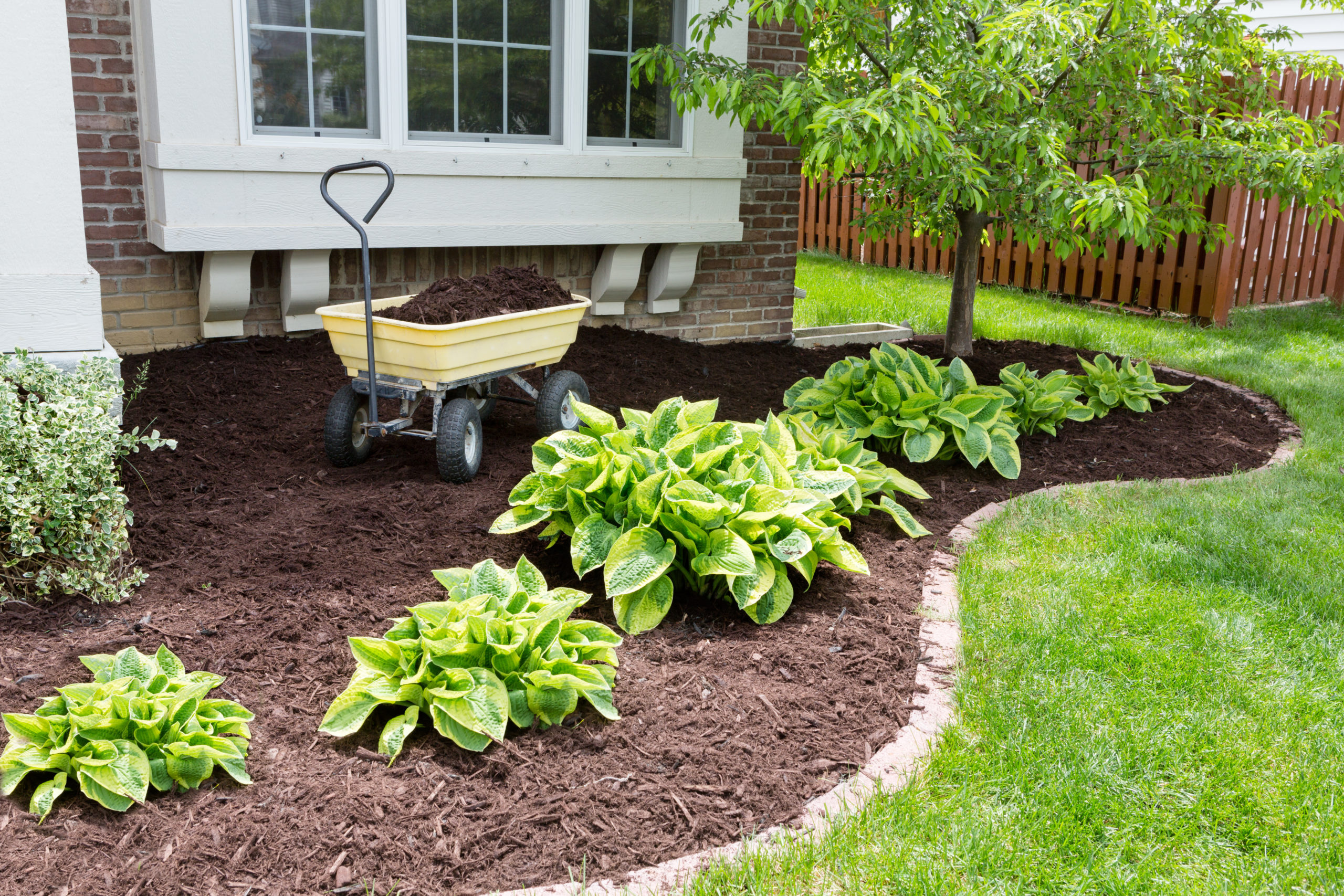
Source Image: www.designoneinc.com
Mulch serves as a cornerstone of sustainable soil management, offering a multitude of benefits for soil texture improvement, plant health, and environmental conservation. By understanding the diverse mechanisms, applications, and long-term implications of mulch usage, gardeners and landscapers can harness its full potential to cultivate healthy, resilient ecosystems for future generations.

Source Image: www.nicheagriculture.com
Mulch Benefits for Soil Texture Improvement
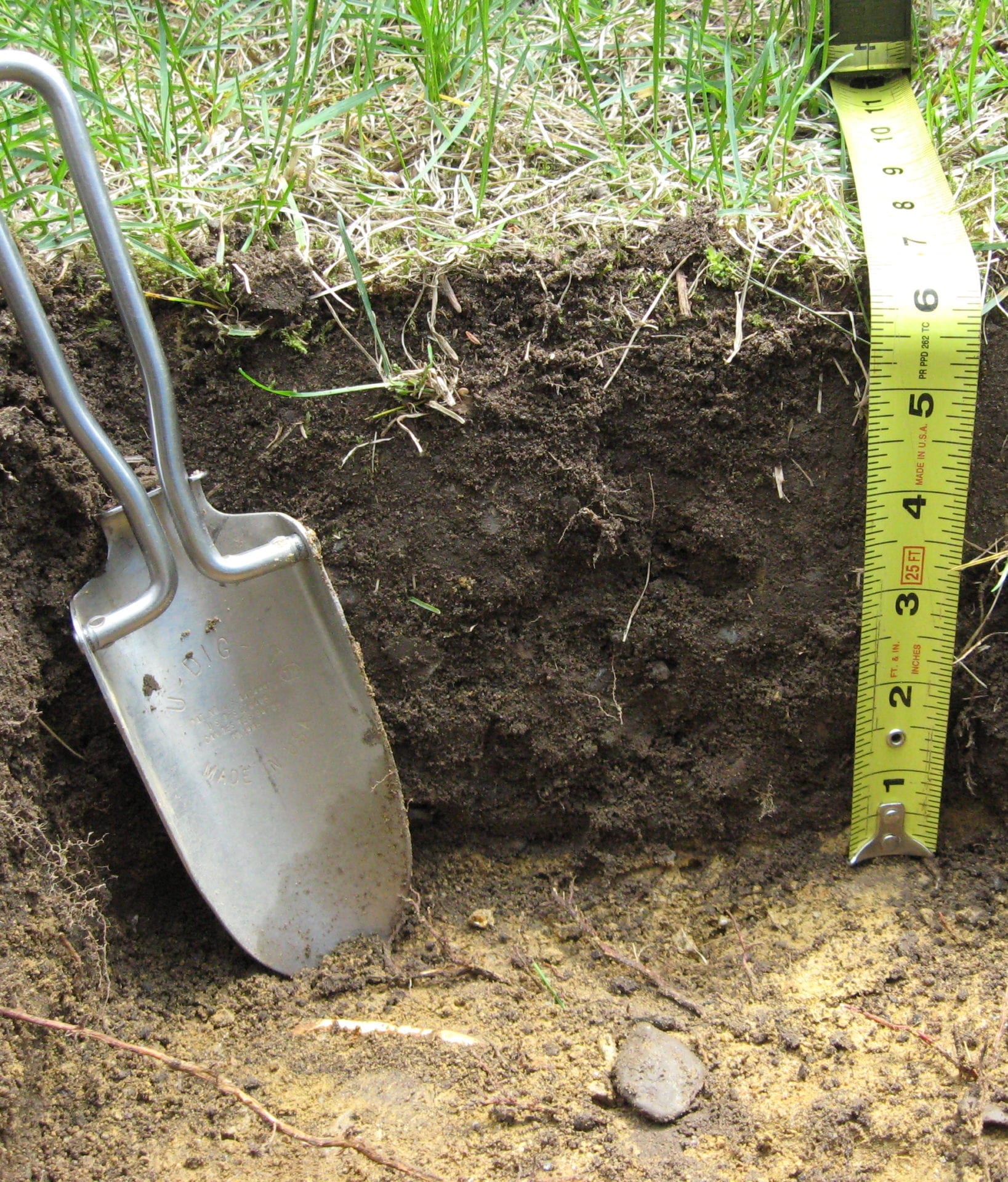
Source Image: www.ecolandscaping.org

